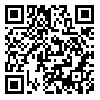Volume 5, Issue 2 (summer 2019)
J Health Res Commun 2019, 5(2): 73-83 |
Back to browse issues page
Download citation:
BibTeX | RIS | EndNote | Medlars | ProCite | Reference Manager | RefWorks
Send citation to:



BibTeX | RIS | EndNote | Medlars | ProCite | Reference Manager | RefWorks
Send citation to:
Samadi-Miarkolaei H, Samadi-Miarkolaei H. Relationship between Cyberloafing and Organizational Citizenship Behavior in the Healthcare and Treatment Network with Structural Equation Modeling Approach. J Health Res Commun 2019; 5 (2) :73-83
URL: http://jhc.mazums.ac.ir/article-1-392-en.html
URL: http://jhc.mazums.ac.ir/article-1-392-en.html
PhD, Department of Public Administration, Science and Research Branch, Islamic Azad University, Tehran, Iran
Abstract: (4320 Views)
Introduction and purpose: Nowadays, healthcare and treatment networks as an operator of the executive and administrative policies of the Ministry of Health are not able to develop efficacy without the voluntary tendency of employees for cooperation. In this context, the organizational citizenship behavior (OCB) might lead to the development of organizational performance in short- and long-term by increasing the productivity and efficacy of the employees. One of the key influential factors in the occurrence of these excellent behaviors in employees is the side effects of the internet and new technologies. Therefore, the present research aimed to investigate the relationship between cyberloafing and OCB of the employees.
Methods: This applied descriptive-correlational research was performed on the statistical population of all the employees of Babolsar healthcare and treatment network. A total of 165 subjects were selected through simple sampling method. In order to explore the OCB and cyberloafing, the standard scales were used. Data analysis was carried out by the SPSS and LISREL software.
Results: The results of the present study showed an inverse and significant relationship between OCB and cyberloafing (P<0.001). The latter inverse significant correlation was supported by the structural equation modeling test (β=0.79). The values of goodness of fit (GFI) indices were found as χ2/df=1.91, GFI=0.97, normed fit index (NFI)=0/97, and root mean square of approximation (RMSEA)=0.076. All the findings demonstrated a desirable fitness of model.
Conclusion: According to the findings of this study, the cyberloafing of the employees of healthcare and treatment network has an undesirable impact on the occurrence of their OCB. As a result, it is recommended that the authorities provide conditions and environment in a way that group norms, organizational norms, and engagement in work become more significant for employees.
Methods: This applied descriptive-correlational research was performed on the statistical population of all the employees of Babolsar healthcare and treatment network. A total of 165 subjects were selected through simple sampling method. In order to explore the OCB and cyberloafing, the standard scales were used. Data analysis was carried out by the SPSS and LISREL software.
Results: The results of the present study showed an inverse and significant relationship between OCB and cyberloafing (P<0.001). The latter inverse significant correlation was supported by the structural equation modeling test (β=0.79). The values of goodness of fit (GFI) indices were found as χ2/df=1.91, GFI=0.97, normed fit index (NFI)=0/97, and root mean square of approximation (RMSEA)=0.076. All the findings demonstrated a desirable fitness of model.
Conclusion: According to the findings of this study, the cyberloafing of the employees of healthcare and treatment network has an undesirable impact on the occurrence of their OCB. As a result, it is recommended that the authorities provide conditions and environment in a way that group norms, organizational norms, and engagement in work become more significant for employees.
Keywords: Cyberloafing, Healthcare and treatment network, Human resources, Organizational citizenship behavior
Type of Study: Research(Original) |
Subject:
Psychology
Send email to the article author
| Rights and permissions | |
 |
This work is licensed under a Creative Commons Attribution-NonCommercial 4.0 International License. |







